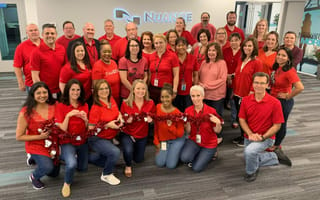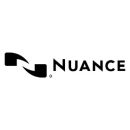Customer success managers need to be empathetic, excellent communicators, whip-smart problem solvers and…experts at slicing and dicing data?
Digging into customer data may be new territory for many, but it can provide valuable insight into how products are being used and give CSMs a more holistic understanding of their customers’ experience. For example, based on data, they can make suggestions on how to better utilize certain features, troubleshoot issues or simply show off a client’s progress.
Senior Vice President of Customer Experience Therese Kelleher said that for her team at Thought Industries, leveraging customer data isn’t just a nice tool to have — it’s become a staple of how the success team functions.
“Access to relevant, reliable and actionable data is critical to the overall success of our customer experience organization and for customer health and success,” Kelleher said.
Built In Boston talked to Kelleher and Brad Morrison, an SVP of Customer Success at Nuance, to find out what tools, trainings and initiatives they’ve used to build data-driven teams — and how it’s paying off for CSMs and customers alike.

Because many CSMs don’t have an abundance of experience working with data, Morrison looked to trainings and enablement to get his team up to speed. Once equipped with the necessary knowledge, CSMs can confidently give tailored insights to their customers, allowing customers to utilize Nuance’s healthcare software to its full extent.
“Our aim is to enable CSMs to sit down and provide a summary of information to the customer so they can see the story of their use and the data that supports it,” Morrison said.
In order to build a data-driven team culture, your team needs ready access to data. How do you ensure your CSMs have access to the data they need when they need it?
As we’ve converted to the cloud, we’ve shifted into a true customer success model where we can collect data, instead of relying on information solely from the customers. We’ve leveraged the cloud instances of all our solutions, and we feed that data into Power BI. This enables us to slice the data any way we need to at the user and customer levels, so our CSMs can best interpret it and provide actionable insights.
The goal for our team is to continually educate CSMs on the power of data and make it accessible for them.”
The shift in our culture has been focused on how we use data, like historical trend lines and current instances of use, to determine the most tactical next steps for our customers. Our relationships are built on the trust that we know what the data is today and that we can use it to help predict what will happen tomorrow.
For example, on our healthcare customer success team, it’s vital that we watch usage trends in our solutions and understand what we can do to ensure we’re providing the right support to end-users like nurses, doctors and radiologists. This is key in helping them leverage the right information as they interact with our technology. Internally, the goal for our team is to continually educate CSMs on the power of data and make it accessible for them, so that in turn, we can provide the most optimized experience possible to the hundreds of thousands of people that use our solutions.
How do you train your CSMs to improve their data literacy and ensure they feel empowered and confident enough to leverage the data they have access to?
A lot of the team members come into a CSM role without a background in data — they typically have an account management background where they’ve focused on building relationships. When you move to a true SaaS model in customer success, you have to focus on understanding the data. This takes a lot of training, which is why we have an enablement function. The training we do with our CSMs encourages them to poke holes in the data to interpret it and feel comfortable enough that they can succinctly capture the best data story to present to our customers.
Our “eyes on glass” team spends time in the data every day, putting it into a summarized view for the CSM to understand what it’s telling us, then giving them the tools to slice and dice it. The partnership of these groups enables us to look at data holistically across our entire user population and to break it down on a customer-by-customer basis to provide tailored-use guidance and insights.
What specific steps have you taken to bake data into your culture and the conversations you have with members of your team?
When you talk about the implementation of our cloud solutions, you have two metrics on achieving certain levels of utilization: the usage of the actual cloud solution and the adoption, which is how well they’re using it.
So, we’ve ensured that use and optimization of data are leveraged at every stage of the customer lifecycle. We’ve started to implement an end-user support model where, through our application, we're engaging directly with the end-user to understand how they're using the product. We have to look at the specific outcomes of the usage data: deployment, account management, support and more. All of these add up to metrics around how to make a customer successful and how to drive them towards optimization.

“What’s your tech stack?”
It’s a question every engineer is familiar with, but they’re certainly not the only ones who keep technical tools at their fingertips. SVP of Customer Experience Therese Kelleher explains that her team can quickly navigate through customer data and pull insights through Zendesk, CustomerGauge, Gainsight and more.
In order to build a data-driven team culture, your team needs ready access to data. How do you ensure your CSMs have access to the data they need when they need it?
Access to relevant, reliable and actionable data is critical to the overall success of our customer experience organization and for customer health and success. To ensure we empower our customer experience team to drive strong customer advocacy, outcomes and Net Promoter Score, we mapped the customer journey and outlined the relevant data points. We have identified the data required and the sources where we collect the data set: Salesforce, ZenDesk, CustomerGauge and our own instance of Thought Industries. We curate these data points inside Gainsight.
What tools or technologies are you using to collect or analyze this data?
We have deployed and integrated the Thought Industries platform with Gainsight CX, CustomerGauge, Zendesk and Salesforce. This allows us to capture platform utilization, recent logins, platform growth, contract utilization, renewal dates, health score, risk levels and customer advocacy.
To ensure the CSMs have just-in-time access to data, we have created numerous call-to-actions and KPIs inside Gainsight that provide proactive triggers to the relevant CSM. With the consolidation of a progressive tech stack, each CSM has their own dashboard within Gainsight that allows them to manage their client base in a proactive and consultative way without having to hunt for relevant data in multiple places, like support tickets in ZenDesk, NPS in CustomerGauge and contract usage in SFDC.
How do you train your CSMs to improve their data literacy and ensure they feel empowered and confident enough to leverage the data they have access to?
We have weekly forecasting calls to walk through the health of each CSM’s book of business using the same data set that they work in everyday. This enables them to get accustomed to how we view the data.
We take the opportunity to talk through various customer-use cases and how to leverage the data that is available to us.”
We also encourage them to participate in industry webinars and online events, such as Gainsight Pulse, and listen to relevant podcasts. We take the opportunity to talk through various customer-use cases and how to leverage the data that is available to us. We structure progressive customer conversations that are not purely related to the customer’s performance, but also include how the customer is meeting their internal KPIs and revenue targets.
What specific steps have you taken to bake data into your culture?
We split our customer experience meeting into two sessions. The first is focused on customer and performance data. These conversations are focused on retention forecasting, expansion and upsell opportunities based on the dataset and overall health of our business.
The second session is focused on progressive CX discussion around customers’ time-to-value, success plans and outcomes, advocacy opportunity and overall account stability. We also review our customers’ success plans and KPIs to ensure they derive as much value from our customer training platform as possible.










